
L'Internet des objets médicaux (IoMT) et son impact sur les soins de santé
10 Nov, 2023
 Équipe Healthtrip
Équipe HealthtripDans le paysage technologique actuel en évolution rapide, le secteur de la santé connaît une profonde transformation. L’Internet des objets médicaux (IoMT) est l’une des avancées les plus significatives dans le domaine des technologies de santé). IOMT fait référence à l'écosystème interconnecté des dispositifs médicaux, des capteurs, des applications logicielles et des systèmes de soins de santé qui exploitent la puissance d'Internet pour collecter, transmettre et analyser les données de santé. Cette technologie transformatrice remodèle la façon dont les soins de santé sont dispensés, surveillés et gérés. Dans ce blog, nous nous plongerons dans le monde de l'IOMT et explorerons son impact remarquable sur les soins de santé.
Transformez votre beauté, Boostez votre confiance
Trouver le bon cosmétique procédure adaptée à vos besoins.

Nous sommes spécialisés dans une large gamme des procédures cosmétiques

Qu'est-ce que IOMT?
L'IoMT, également connu sous le nom de Healthcare IoT (IoT), est un sous-ensemble du concept plus large de l'Internet des objets (IoT), spécifiquement conçu pour le secteur de la santé. Il englobe un large éventail de dispositifs et de technologies médicaux connectés à Internet ou à d’autres réseaux de communication. Ces appareils peuvent collecter des données précieuses pour les patients, les transmettre à des prestataires de soins de santé ou à des plateformes basées sur le cloud et les analyser pour prendre des décisions éclairées concernant les soins aux patients.
Le concept d'IoMT est en développement depuis plusieurs années et ses racines remontent aux débuts de la surveillance à distance des patients et de la télémédecine. Cependant, les progrès récents dans les domaines de la communication sans fil, de la technologie des capteurs et de l’intelligence artificielle ont accéléré sa croissance et son adoption. Aujourd’hui, l’IoMT est devenue la pierre angulaire des soins de santé modernes.
Composants de IOMT
IOMT est construit sur plusieurs composants clés qui fonctionnent en tandem pour créer un écosystème de soins de santé connecté:
Procédures les plus populaires dans
Arthroplastie totale
Jusqu'à 80% de réduction
Noté à 90 %
Satisfaisant
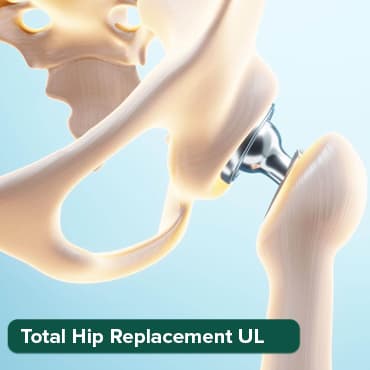
Arthroplastie totale
Jusqu'à 80% de réduction
Noté à 90 %
Satisfaisant
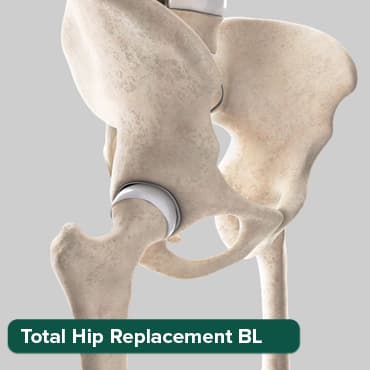
Chirurgie du cancer
Jusqu'à 80% de réduction
Noté à 90 %
Satisfaisant
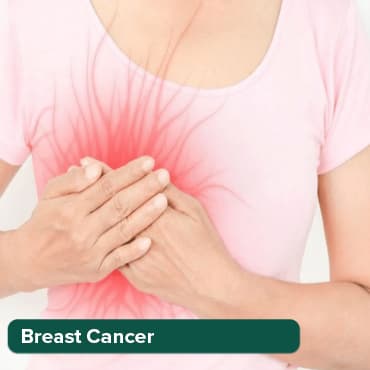
Arthroplastie totale
Jusqu'à 80% de réduction
Noté à 90 %
Satisfaisant
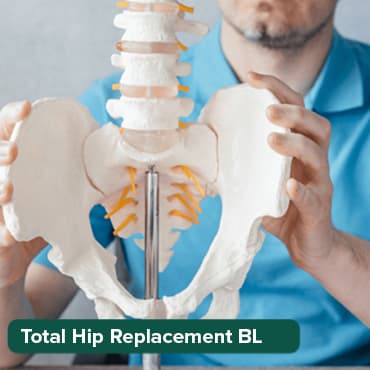
Arthroplastie totale
Jusqu'à 80% de réduction
Noté à 90 %
Satisfaisant
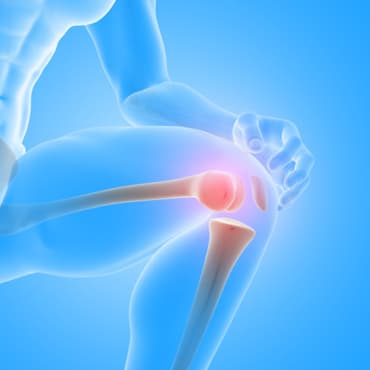
1. Dispositifs médicaux et capteurs
IOMT s'appuie fortement sur un large éventail de dispositifs et de capteurs médicaux. Ces appareils sont conçus pour capturer diverses données physiologiques et liées à la santé. Quelques exemples courants incluent:
- Dispositifs de santé portables: Les montres intelligentes, les trackers de fitness et autres portables surveillent les signes vitaux comme la fréquence cardiaque, les habitudes de sommeil et l'activité physique.
- Dispositifs médicaux implantables: Les appareils tels que les stimulateurs cardiaques et les pompes à insuline sont équipés de capteurs qui collectent et transmettent des données sur l'état d'un patient.
2. Infrastructure de communication de données
Pour que l’IoMT fonctionne efficacement, une infrastructure de communication de données robuste est essentielle. Ceci comprend:
- Technologies sans fil: Les réseaux Bluetooth, Wi-Fi et Cellular permettent une transmission de données transparente entre les appareils et les systèmes de santé.
- Cloud Computing et stockage: Le cloud sert de référentiel centralisé pour les données de santé, ce qui la rend accessible aux professionnels de la santé autorisés.
3. Analyse de données et intelligence artificielle (IA)
Les données recueillies à partir de dispositifs médicaux sont souvent vastes et complexes. C'est là que l'analyse des données et l'IA entrent en jeu:
- Apprentissage automatique pour les soins de santé: Les algorithmes d'IA analysent les données des patients pour identifier les tendances, détecter les anomalies et faire des prédictions sur la progression de la maladie.
- Analyses prédictives: Les prestataires de soins de santé peuvent utiliser l'analyse prédictive pour anticiper les besoins des patients, optimiser les plans de traitement et améliorer les résultats.
Comment iomtworks ?
1. Connectivité des appareils: L'IoMT implique l'utilisation de divers dispositifs médicaux équipés de capteurs. Ces appareils peuvent aller des trackers de fitness portables, des tensiomètres et des glucomètres à des équipements médicaux plus spécialisés comme les appareils ECG (électrocardiogramme. Ces capteurs collectent en continu ou périodiquement des données liées à la santé.
2. Collecte de données: Les capteurs de ces dispositifs médicaux collectent un large éventail de données, y compris des signes vitaux (tels que la fréquence cardiaque, la pression artérielle et la température), les niveaux d'activité des patients, l'adhésion aux médicaments et d'autres mesures de santé pertinentes. Ces données sont généralement générées en temps réel.
3. Transmission de données: Une fois collectés, les données sont transmises en toute sécurité à une plate-forme ou serveur centrale. La transmission peut se produire grâce à diverses méthodes de communication, notamment le Wi-Fi, le Bluetooth, les réseaux cellulaires ou les protocoles de communication médicale spécialisés. Les données sont envoyées à un emplacement de stockage désigné pour un traitement ultérieur.
4. Traitement et analyse des données: Sur la plateforme centrale, les données collectées font l'objet de traitements et d'analyses. Cela implique plusieurs étapes, notamment la normalisation des données (garantissant la cohérence et l'exactitude), l'agrégation (combinant des données provenant de plusieurs sources) et l'application d'algorithmes. Ces algorithmes peuvent être conçus pour détecter les modèles, les anomalies ou les tendances dans les données.
5. Cloud computing: De nombreux systèmes IoMT exploitent le cloud computing pour le stockage, le traitement et l'analyse des données. Les plates-formes cloud offrent l'évolutivité, la sécurité et l'accessibilité de n'importe où avec une connexion Internet. Il permet également l'intégration de données provenant de sources multiples et facilite l'accès à distance par les professionnels de santé.
6. Intégration avec les systèmes de soins de santé: Les systèmes IOMT sont souvent intégrés aux dossiers de santé électroniques (DSE) et à d'autres systèmes informatiques de santé. Cette intégration garantit que les données collectées sont disponibles pour les prestataires de soins de santé et peuvent être intégrées de manière transparente dans les antécédents médicaux d'un patient. Il aide également à la prise de décision et à la planification du traitement.
7. Alertes et notifications: Les systèmes IOMT peuvent être configurés pour générer des alertes et des notifications basées sur des critères prédéfinis. Par exemple, si les signes vitaux d'un patient s'écartent de la plage normale, le système peut envoyer une alerte aux prestataires de soins de santé, aux soignants ou même directement au patient. Cette surveillance en temps réel peut être critique pour une intervention précoce.
8. Supervision à distance: L'un des principaux avantages de l'IOMT est la surveillance à distance. Les prestataires de soins de santé peuvent accéder à distance aux données des patients, réduisant le besoin de visites fréquentes en personne. Ceci est particulièrement bénéfique pour les patients souffrant de maladies chroniques, car il permet une surveillance continue et des ajustements en temps opportun aux plans de traitement.
8. Apprentissage automatique et IA: Certains systèmes IOMT intègrent l'apprentissage automatique et les algorithmes d'intelligence artificielle (IA. Ces algorithmes peuvent analyser les données historiques des patients pour prédire les résultats de santé, identifier les risques potentiels pour la santé et proposer des recommandations personnalisées aux patients.
9. Sécurité et confidentialité: Étant donné la sensibilité des données médicales, la sécurité et la confidentialité sont primordiales dans les systèmes IOMT. Des mesures telles que le cryptage des données, l'authentification des utilisateurs, les contrôles d'accès et le respect des réglementations en matière de soins de santé (par ex.g., HIPAA aux États-Unis) sont mises en œuvre pour protéger les informations des patients.
10. Évolutivité et mises à jour: Les systèmes IoMT doivent être évolutifs pour s'adapter à un nombre croissant d'appareils connectés et de patients. Des mises à jour et une maintenance régulières sont nécessaires pour maintenir le système sécurisé et à jour avec les avancées technologiques.
En résumé, l'IoMT fonctionne en connectant des appareils médicaux, en collectant et en transmettant les données des patients, en traitant et en analysant ces données, en les intégrant aux systèmes de santé, en fournissant des alertes en temps réel et une surveillance à distance, et en garantissant la sécurité et la confidentialité des informations sur les patients. Il tire parti de la technologie pour améliorer la prestation des soins de santé, améliorer les soins aux patients et permettre la prise de décision basée sur les données par les professionnels de la santé.
Applications de l'IoMT dans les soins de santé
L'IoMT dispose d'un large éventail d'applications qui révolutionnent le secteur de la santé:
1. Surveillance à distance des patients
L'un des avantages les plus importants de l'IOMT est la capacité de surveiller à distance les patients. Ceci est particulièrement précieux pour les personnes souffrant de conditions chroniques. Des appareils tels que les moniteurs de fréquence cardiaque portables peuvent transmettre des données en temps réel aux prestataires de soins de santé, permettant ainsi une intervention précoce si nécessaire.
2. Télémédecine et consultations virtuelles
L'IoMT a permis le développement de la télémédecine et des consultations virtuelles. Les patients peuvent désormais accéder aux services de santé dans le confort de leur foyer grâce à des appels vidéo et à des plateformes de télémédecine dédiées. Cela a une amélioration de l'accessibilité des soins de santé, en particulier pour ceux des régions éloignées.
3. Hôpitaux intelligents et établissements de santé
IOMT joue un rôle crucial dans la transformation des hôpitaux traditionnels en installations intelligentes. L'équipement et les systèmes automatisés rationalisent les opérations, réduisent les erreurs humaines et améliorent les soins aux patients. Les lits intelligents, les distributeurs de médicaments et les systèmes de surveillance contribuent tous à un environnement de santé plus efficace.
4. Gestion des médicaments
IOMT aide à la gestion des médicaments en garantissant aux patients adhérer à leurs médicaments prescrits. Les distributeurs de pilules intelligentes peuvent fournir des rappels, distribuer des pilules au bon moment et même alerter les prestataires de soins de santé si un patient manque une dose.
Avantages de l'IOMT dans les soins de santé
L'adoption de l'IoMT dans le domaine de la santé apporte plusieurs avantages notables:
1. Soins aux patients améliorés
- Diagnostic et traitement en temps opportun: IOMT permet la détection précoce des problèmes de santé, conduisant à un diagnostic et à un traitement plus rapides.
- Soins de santé personnalisés: Les informations basées sur les données permettent aux prestataires de soins de santé d'adapter les plans de traitement à des patients individuels, augmentant la probabilité de résultats réussis.
2. Efficacité améliorée
- Opérations de santé rationalisées: L'automatisation et l'analyse des données réduisent les charges administratives, permettant aux professionnels de la santé de se concentrer sur les soins aux patients.
- Réduction des coûts de santé: IOMT peut entraîner des économies de coûts en prévenant les complications, en réduisant les réadmissions à l'hôpital et en optimisant l'allocation des ressources.
3. Informations basées sur les données
- Gestion de la santé de la population: Les organismes de santé peuvent utiliser des données agrégées pour identifier les tendances en matière de santé dans des populations spécifiques et développer des interventions ciblées.
- Recherche et essais cliniques: IOMT facilite la collecte de données sur les patients du monde réel, ce qui les rend inestimables pour la recherche et les essais cliniques.
Défis et préoccupations
Alors que IOMT offre un immense potentiel, il présente également plusieurs défis et préoccupations:
1. Sécurité et confidentialité
- Violations de données et cyber-menaces: les données sur les soins de santé sont sensibles et très précieux pour les cybercriminels. Assurer la sécurité des données est une priorité absolue.
- Protection des données des patients : trouver un équilibre entre l'accès aux données pour les prestataires de soins de santé et le droit à la vie privée des patients est un défi complexe.
2. Conformité réglementaire
- Réglementations de la FDA pour les dispositifs médicaux : les appareils IoMT doivent être conformes aux réglementations de la FDA, ce qui peut être un processus complexe et long.
- Partage de données et conformité : le partage transfrontalier de données et la conformité à diverses réglementations en matière de soins de santé peuvent s'avérer difficiles.
3. Intégration avec les systèmes existants
- Systèmes hérités et interopérabilité: l'intégration de l'IOMT aux systèmes de santé existants peut être difficile en raison de l'infrastructure héritée et du manque de normes d'interopérabilité.
- Standardisation des données : garantir la cohérence et la standardisation des données sur tous les appareils IoMT est crucial pour une analyse significative.
Tendances et innovations futures
L’avenir de l’IoMT est prometteur, avec plusieurs tendances et innovations à l’horizon:
1. Edge Computing dans IOMT
- Traitement des données en temps réel: L'Edge Computing permet le traitement des données en temps réel au niveau de l'appareil, réduisant ainsi la latence et permettant des temps de réponse plus rapides.
- Latence réduite: Les applications qui nécessitent une faible latence, comme la chirurgie à distance, bénéficient de la réactivité de Edge Computing.
2. IOMT et intelligence artificielle
- Diagnostics basés sur l'IA: Les algorithmes de l'IA continueront d'améliorer la précision du diagnostic, aidant les prestataires de soins de santé à prendre des décisions plus éclairées.
- Analyse prédictive des soins de santé: Les modèles prédictifs deviendront plus sophistiqués, permettant des interventions de santé proactives.
3. Considérations éthiques
- L'IA éthique dans les soins de santé: Alors que l'IA joue un rôle plus important dans la prise de décision des soins de santé, les considérations éthiques, telles que les biais et la transparence, deviendront plus critiques.
- Conseil éclairéT: s'assurer que les patients comprennent comment leurs données sont utilisées et l'obtention d'un consentement éclairé restera importants en matière de préoccupations éthiques.
L'Internet des objets médicaux (IoMT) remodèle le paysage des soins de santé, offrant une myriade d'avantages tout en présentant également des défis qui nécessitent un examen attentif. Alors que l'IOMT continue d'évoluer et de s'intégrer aux systèmes de soins de santé, son impact sur les soins aux patients, l'efficacité et les informations basées sur les données seront de plus en plus profondes. Bien qu'il y ait des obstacles à surmonter, l'avenir des soins de santé semble plus lumineux et plus connecté grâce à IOMT.
À mesure que les prestataires de soins de santé et les organisations adoptent les technologies IoMT, ils sont en mesure de fournir des soins plus personnalisés, plus efficients et plus efficaces aux patients, améliorant ainsi l'expérience globale des soins de santé pour chacun.
Soins de bien-être
Donnez-vous le temps de vous détendre
Prix les plus bas garantis !

Prix les plus bas garantis !